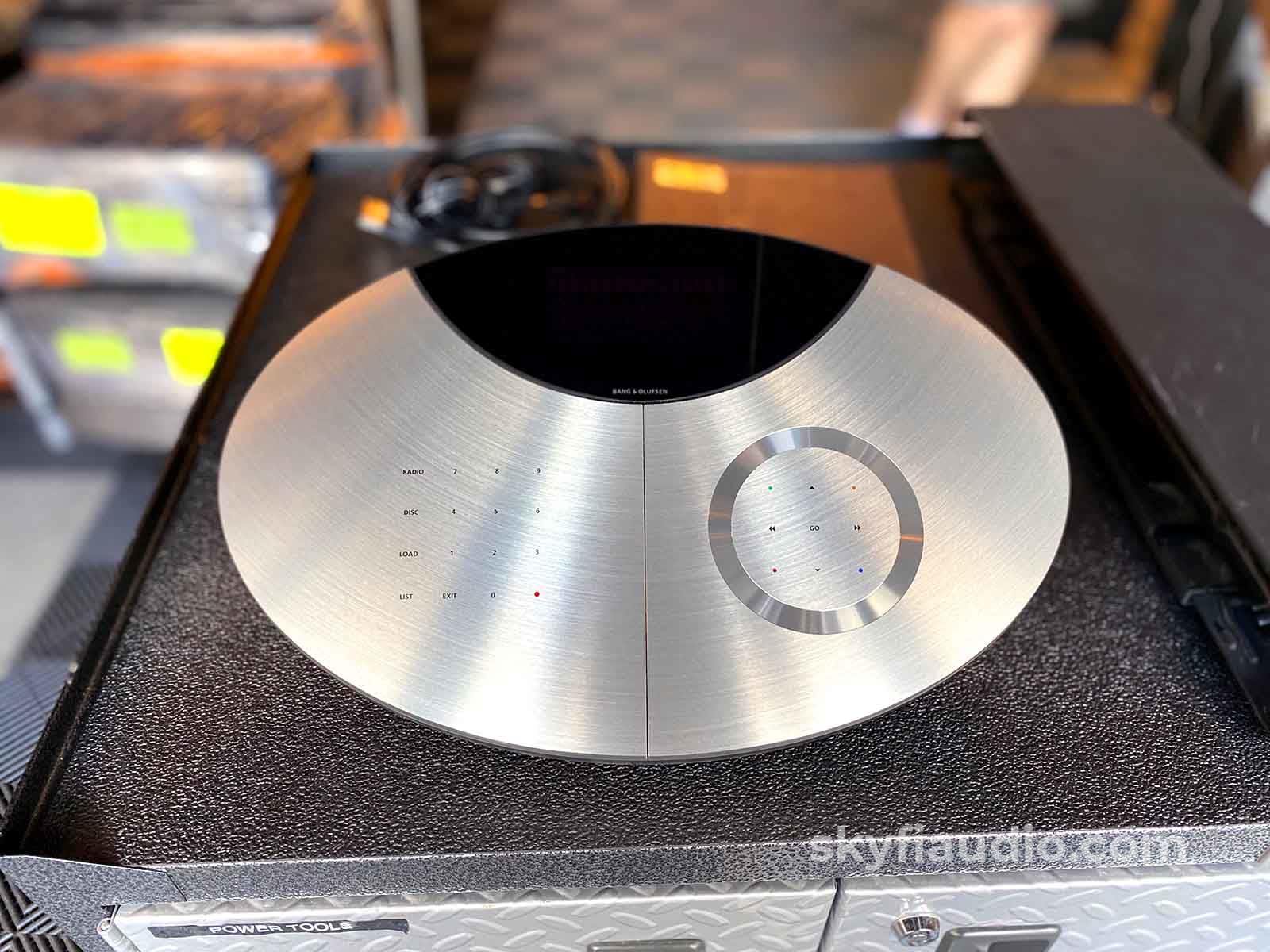
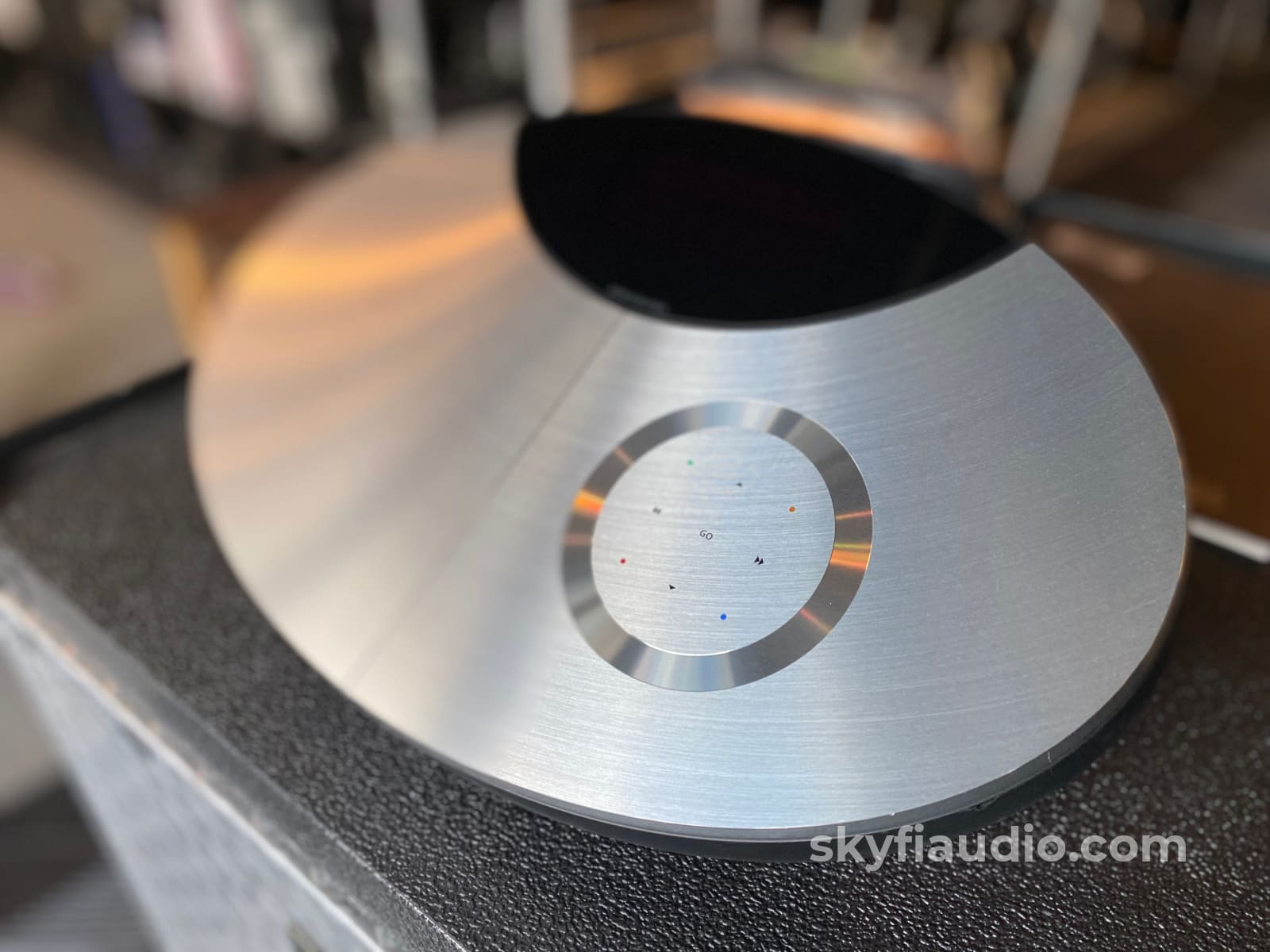
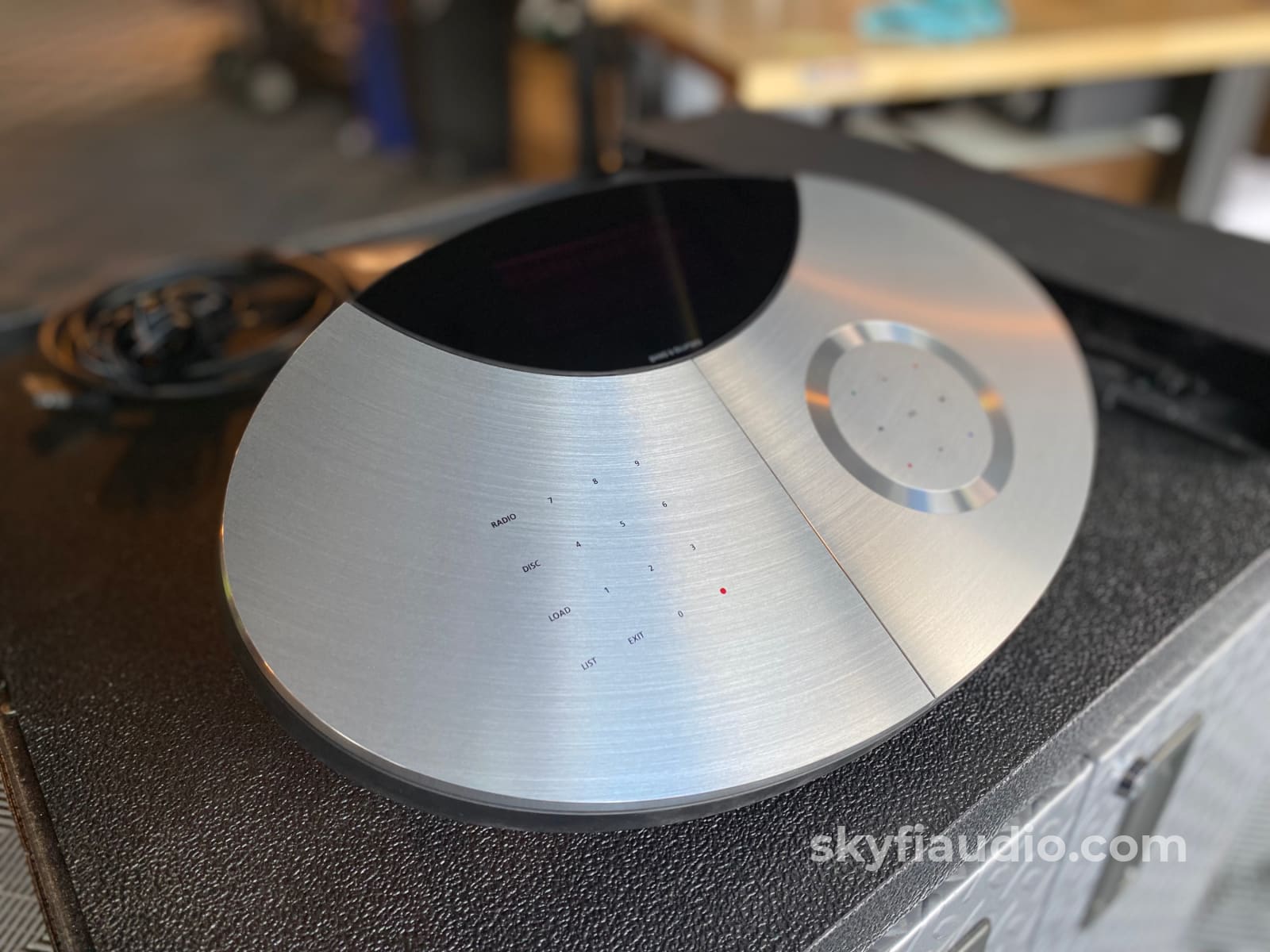
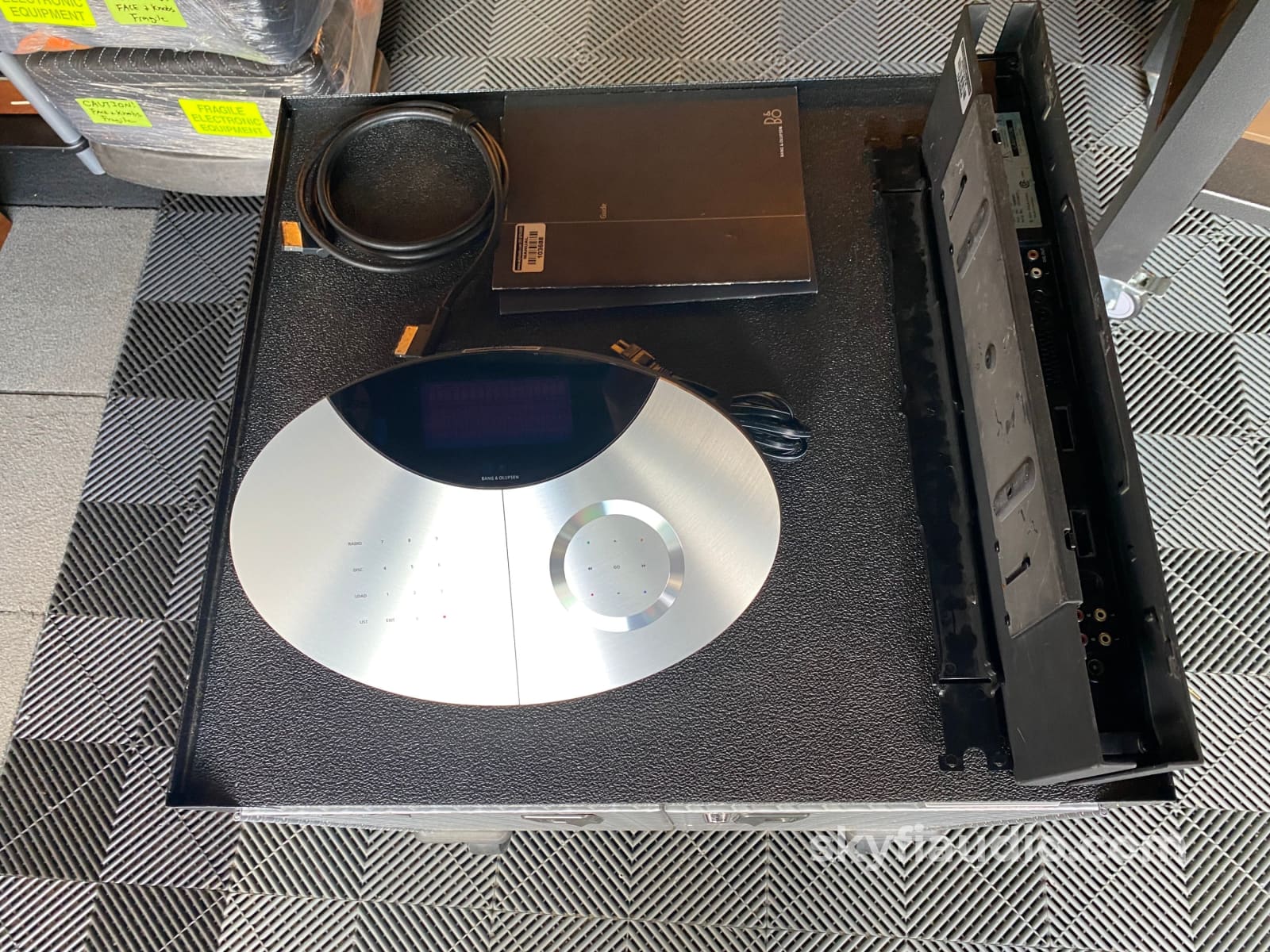

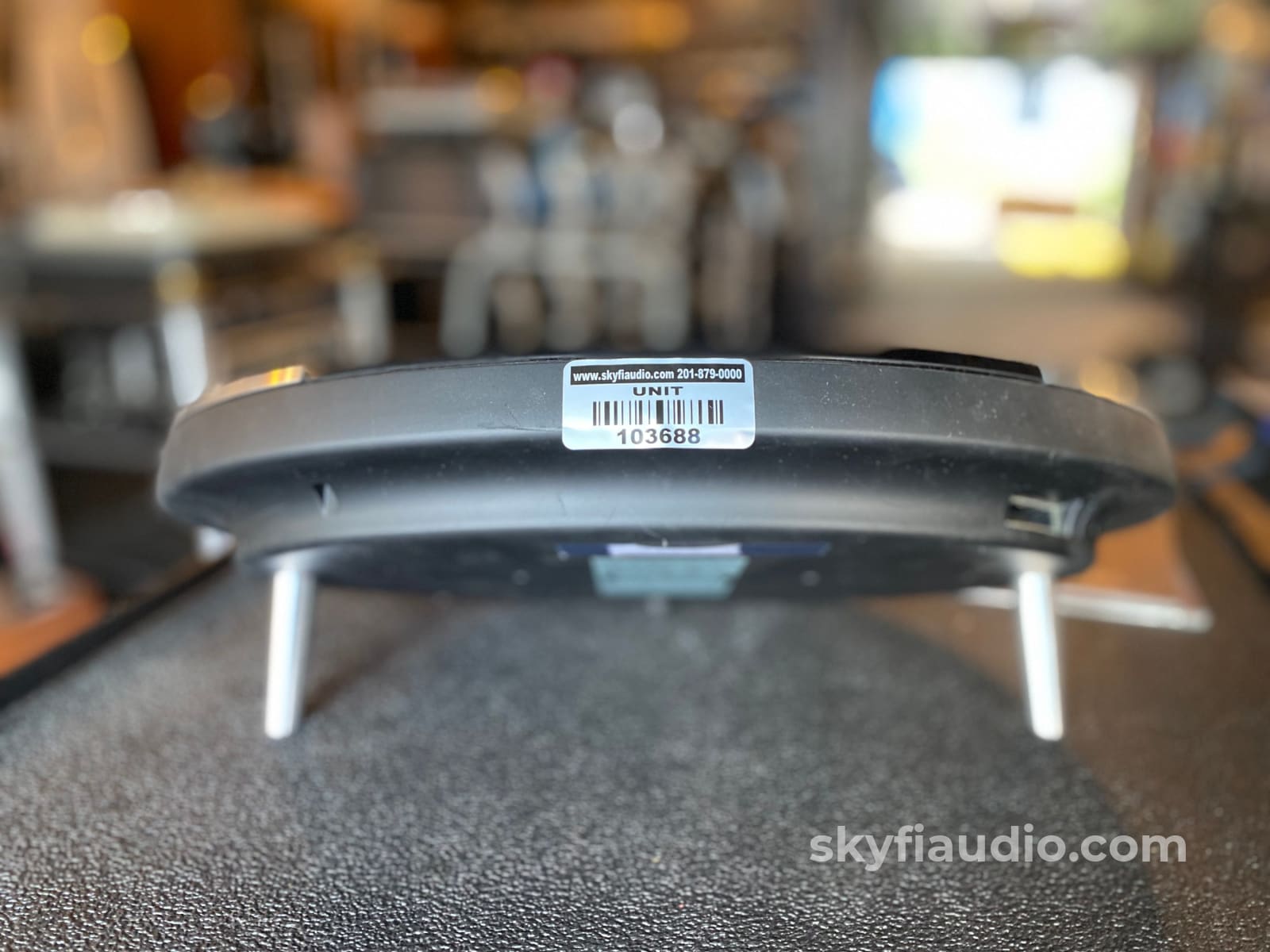
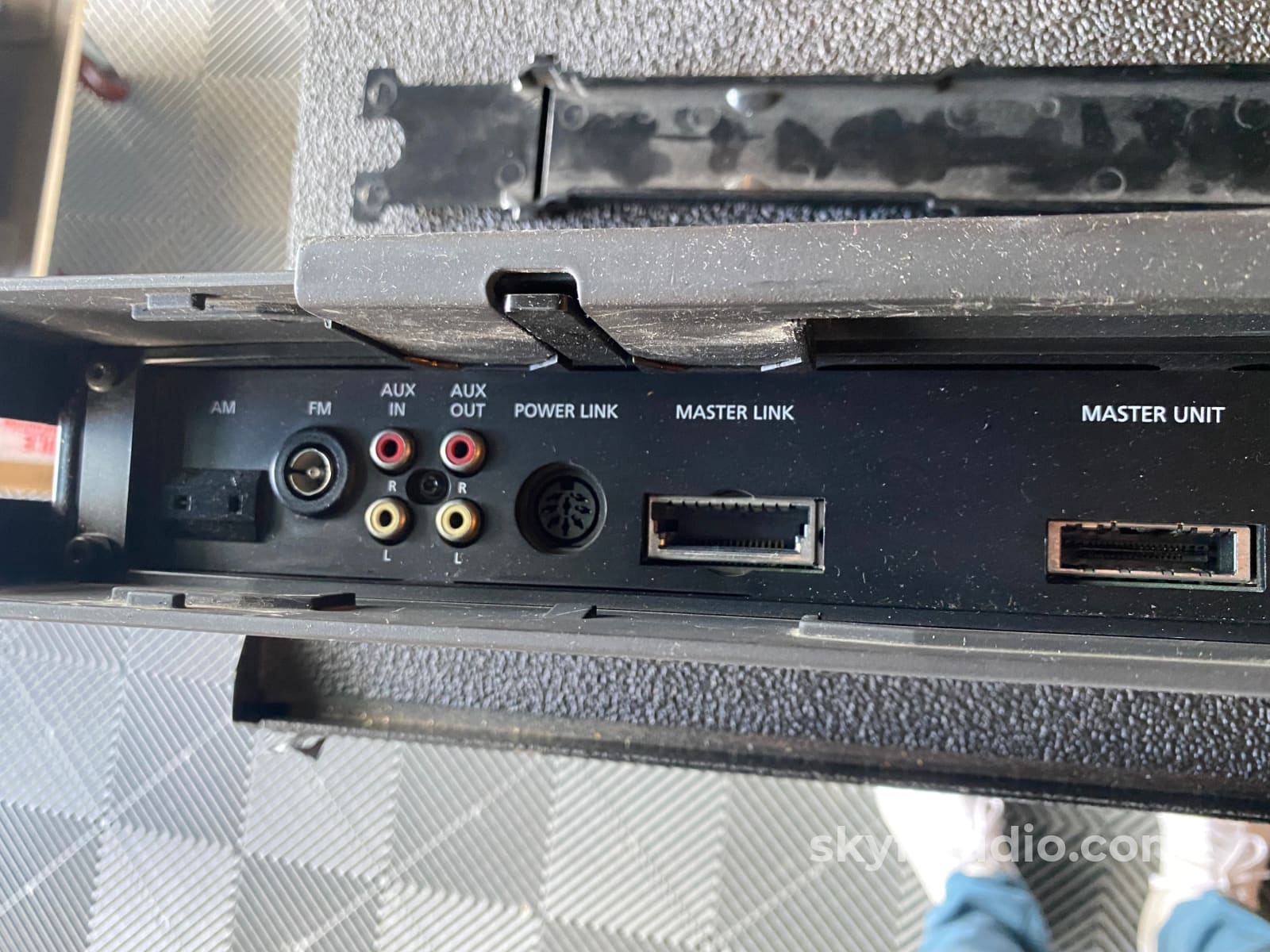
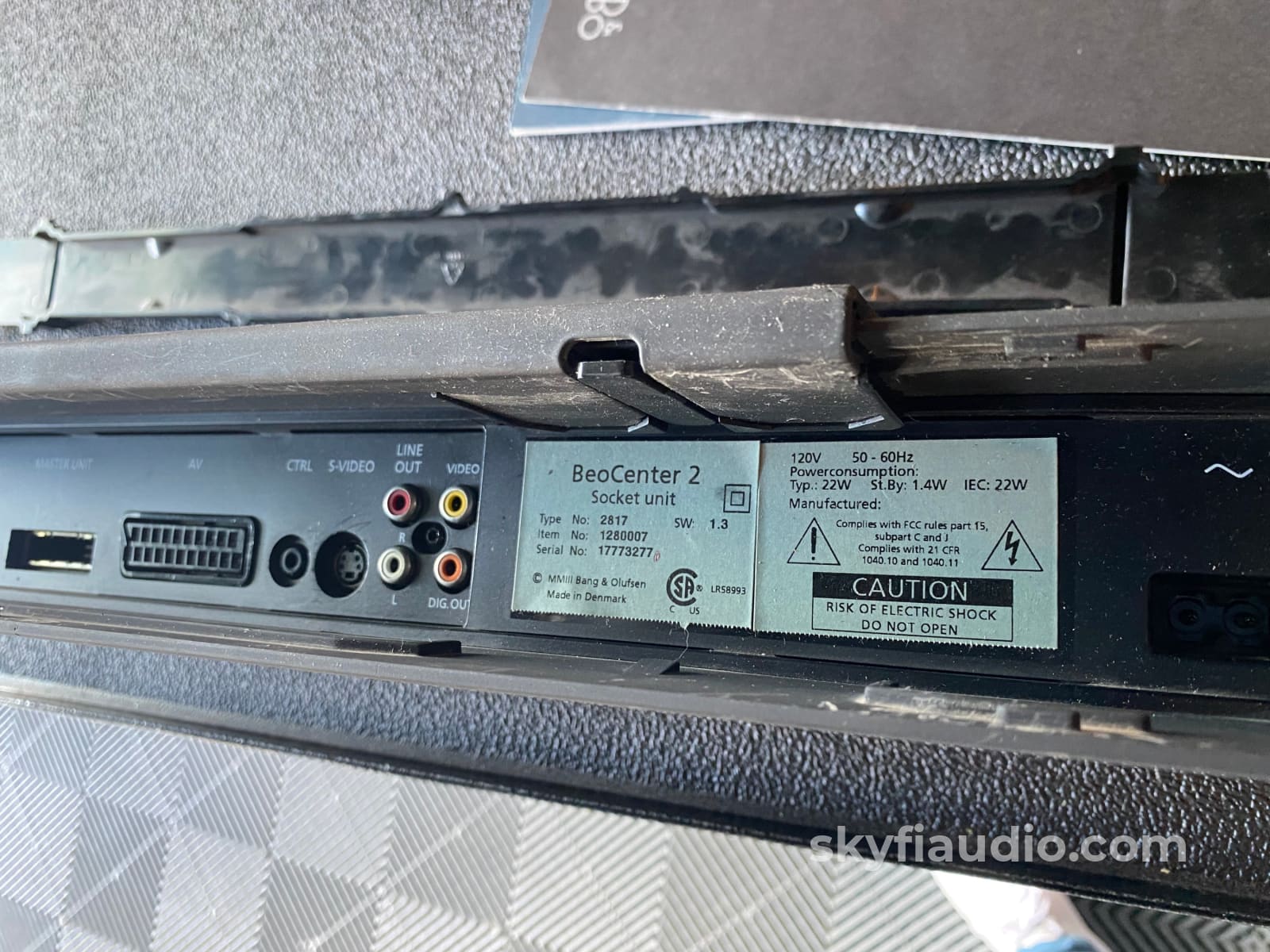
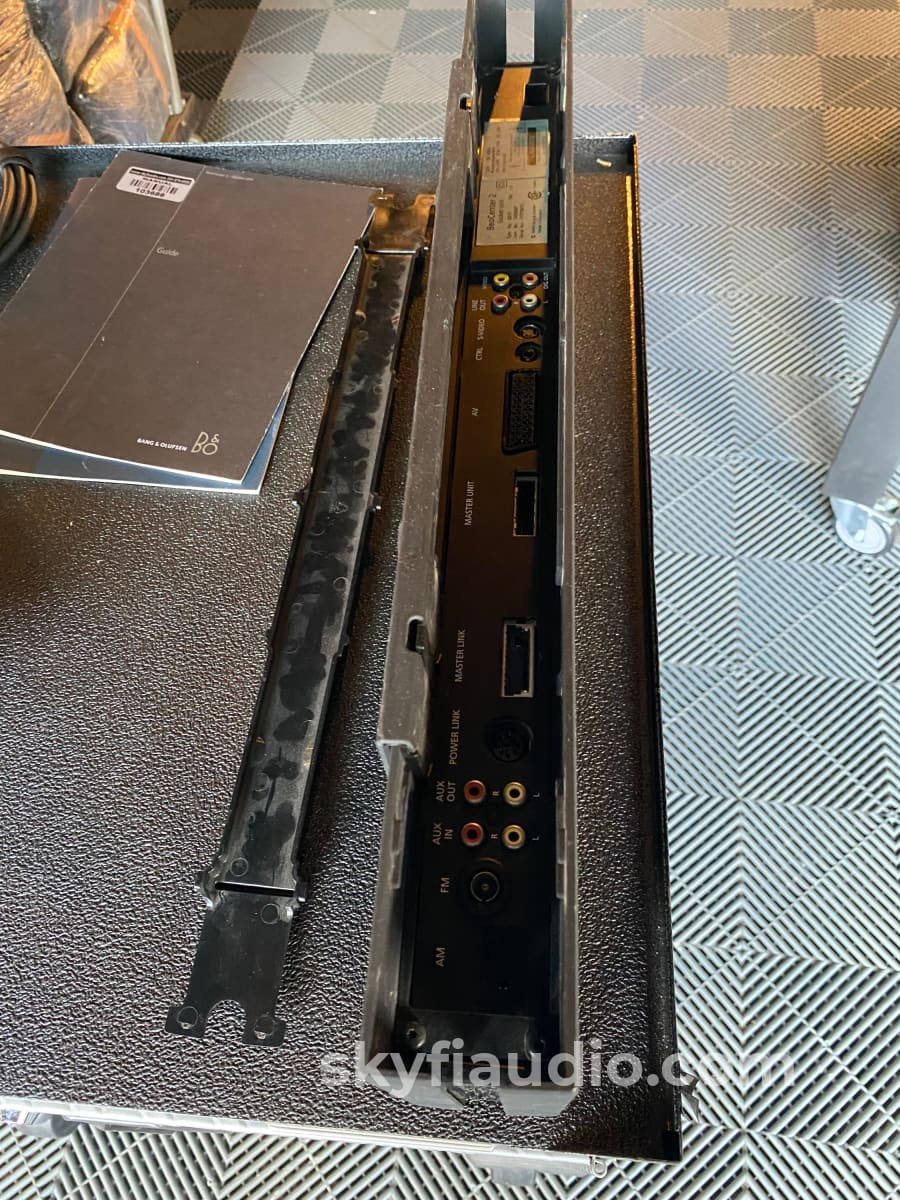
Bang & Olufsen BeoCenter 2 - CD Player and AM/FM Tuner Receiver
Free Shipping on Most Electronics - Excludes Speakers and Items Requiring Freight - Contiguous U.S. Only
Pickup currently unavailable at SkyFi 479

Bang & Olufsen BeoCenter 2 - CD Player and AM/FM Tuner Receiver
SkyFi 479
479 South Broad Street
Glen Rock NJ 07452
United States
Very interesting unit from B&O in a most unusual but living room friendly form factor.
At the push of a button the oval opens up to reveal the CD tray. The volume is a touch wheel on the right much like the original iPod.
"If you press "load" lightly, the two wing-shaped aluminium doors slide aside elegantly to reveal a combined CD and DVD player. When the music or film is playing, the doors slide back to conceal the disc, clearly signalling that the experience is more important than the source."
It has a built-in AM/FM tuner with a handy auto-seek mode for locating the best local stations.
Add a set of powered B&O speakers (we have several currently listed) and you'll have a full and capable system.
This Beocenter 2 is in perfect working condition and has been thoroughly tested in our lab. Cosmetics are near perfect but the rubberized finish on the sides and bottom is a bit sticky from typical aging.
Included with your purchase is the BeoCenter 2 Master Unit, the BeoCenter 2 Socket Unit, 1 x B&O Link Cable to connect the two units together, a power cord, and the manuals / documentation pictured.
Click below to add our recommended matching cables from Kimber Kable, all brand new as SkyFi is an official Kimber dealer.
Kimber Kable - RCA Interconnects - Better
Kimber Kable - RCA Interconnects - Best
More from B&O:
BeoCenter 2 Press Release October 2003
Bang & Olufsen's new music system, the BeoCenter 2, is in many ways a classic Bang & Olufsen product. It has mystique, it is elegant, it is simple and logical.
If you look at the BeoCenter 2 from a distance, the design says nothing about the many functions the system contains. Only when you make physical contact is the content behind the symmetrical polished aluminium doors revealed. If you press "load" lightly, the two wing-shaped aluminium doors slide aside elegantly to reveal a combined CD and DVD player. When the music or film is playing, the doors slide back to conceal the disc, clearly signalling that the experience is more important than the source.
It is by no means unusual for a DVD player to play CDs, but a system that offers radio, CD, DVD and MP3 CD playback is a new way of combining all sources of entertainment in one unit. "At Bang & Olufsen we always focus on integrating technologies and with the BeoCenter 2 we give our customers the chance to combine music and video sources in one unit," says President and CEO Torben Ballegaard Sorensen.
With the oval shape of the master unit, BeoCenter 2 is yet another design step away from the traditional box-shaped units of yesteryear for playing music and images. The size of the display ensures that it can be read at a distance and a light meter behind the glass adjusts the intensity of the display according to the brightness of the room. This avoids the display completely illuminating a dark living room.
In addition to RDS (Radio Data System), the tuner in BeoCenter 2 allows you to program and name up to 60 radio stations. And, of course, the BeoCenter 2 can be integrated into a Beolink network. When connected to a Beolink PC2 it can also play digital music files stored on a computer.
Clean up the Mess
It has always been important for Bang & Olufsen to make it nice and easy for consumers to enjoy music and moving pictures. Most obviously, the concept helps to eliminate the many remote controls that typically pile up on the coffee table, replacing them with one remote control - the Beo4 - which can control all the functions of all the appliances connected, plus the lighting in the room.
Another example is the tradition of concealing cables in stands and behind screens so that the necessary cables do not mar the visual appearance of the products. And where it is not possible to conceal the cables completely, special holders are provided for the cables, making a virtue out of necessity. Finally, there is the design itself. By avoiding visual trivialities and unsightliness, which can mar an audio/video product in themselves, the products look simple and elegant.
BeoCenter 2 is a continuation, a natural development, of this line of thought. The division of the product into two separate parts means that there is great freedom to place the elegant master unit where it is best suited in the room. This may be on a table, mounted on the wall or on an aluminium floor stand specially designed to match the oval shape of the master unit.
From the master unit there is just one cable to the socket unit containing the sockets for all the cables connecting BeoCenter 2 to the mains, speakers, TV, aerials, etc. The socket unit can be concealed under a piece of furniture or behind a curtain. This means that the visible part of the BeoCenter 2 is not spoiled by the jumble of cables required to integrate it into the network of the TV and speakers.
World Class Aluminium Processing
BeoCenter 2's two sliding aluminium doors were a challenge to Bang & Olufsen. Both doors are cut from the same piece of aluminium, but only after the front has been polished in the oval shape that follows the lower edge of the display. This ensures that all details in the polishing are echoed on both doors. Both these sliding doors stay together throughout the complicated process of milling and the two surface treatments. So the doors on the final product match perfectly.
The precision requirements Bang & Olufsen sets for the visual appearance of the product mean that the machine which grinds the edges of the doors works to very small tolerances. For every 1/100 millimetre along the edge, the machine calculates and self-corrects to ensure a perfect oval shape.
When the aluminium is surface-treated in the anodisation plant, tiny pores appear in the surface. These pores are used in the screen printing employed to apply numbers and characters to the front of the doors of the master unit. By pressing the coloured lacquer down into the pores and then surface-treating the doors, very durable printing is achieved. As a result, it is virtually impossible to wear the printing off, even with very frequent use.
Controlling the BeoCenter 2 is a masterpiece of precision. The area beneath the master unit is milled down to 0.5 millimetres. So when the user presses the unit, the thin aluminium sheet bends very easily. This activates the electrical circuits used for the control function. You can neither see nor feel this, but it is enough for it to make contact with the film of conductive material underneath.
The precision processing goes one stage further with the "wheel" on the right-hand door. In a wide circle around the control areas, a further 0.1 millimetre of aluminium has been milled off. The functions of the wheel include adjusting the volume, and it functions according to the same mechanical principle as the rest of the master unit.
Bang & Olufsen BeoCenter 2 - Owner's Manual
General Specifications Master unit
Dimensions W x H x D:
14" x 5.91" x 9.06" (With Standard Included Feet)
Weight:
9.92 lbs.
General Specifications Socket unit
Dimensions W x H x D:
21.10" x 5.91" x 2.17" (Without Wall Bracket)
21.26" x 5.91" x 2.56" (With Wall Bracket)
Weight:
6.17 lbs.
The SkyFi Testing Process for CD Players:
We start with a visual inspection of all internal components to make sure that there are no signs of heat stress or damage. Capacitors are checked for telltale signs of predictive failure including bulging, shrunken wrappers, or physical leakage. We also inspect resistors and other passive components for signs of overheating. When the unit is first powered on we check the drawer mechanism function.
After the visual inspection we connect the CD Player’s RCA outputs to our Sencore PA81 Power Analyzer which simulates a real world input impedance and allows us to monitor the output on an oscilloscope. We start with a test CD with precision test signals to verify proper output on both channels. If the CD player has balanced outputs these are also tested at this time. If this check passes, we move onto evaluation with actual music CDs. We listen for clicks, skips, and drops during playback. At this time we also check the transport functions including skip, ff, rw, play, pause, repeat, and programming if applicable. If the unit has a remote control, all remote control functions are verified.
If the CD player is capable of SACD playback we test its ability to read SACD layers on multiple discs including standard and hybrid SACDs. At this time we also check the unit’s digital outputs where applicable. If SACD layers are being properly read we should see the digital outputs mute during playback. On redbook CD playback we verify that each digital output maintains proper lock on our bench DAC.
After bench testing is completed, CD players are set up for testing on our long term test rig. During extended testing we make sure that unit can play through several different discs from beginning to end with no skips or lock ups.
The SkyFi Testing Process for Tuners:
We start with a visual inspection of all internal components to make sure that there are no signs of heat stress or damage. Capacitors are checked for telltale signs of predictive failure including bulging, shrunken wrappers, or physical leakage. We also inspect the PCBs for discoloration from resistors or transistors that may have been running hot. On vintage units we often spot check select capacitors for value and ESR. Vintage analog tuners also have moving parts related to the tuning gang and dial string. These parts are inspected for smooth operation.
If the unit passes visual inspection it is bench tested for a handful of key performance parameters using a Sencore SG80 AM/FM Stereo Analyzer. The SG80 allows us to “simulate” an ideal radio station using precision test signals instead of music. This device, in conjunction with an oscilloscope allows us to properly evaluate the following parameters:
1. AM Reception (Where Applicable)
2. FM Mono Reception & Tuning Meter Function
3. FM MPX Reception (Stereo)
4. Dial Tracking - How accurately the tuner dial or display indicates the actual frequency of the broadcast being received.
5. Stereo Separation - A properly working stereo tuner will have minimal crosstalk between the left and right channel.
6. Sensitivity & Signal Strength Meter Function - By lowering the output of the SG80 we can simulate weak stations and determine how well the tuner will be able to pull in weak distant stations. This adjustment also helps us verify signal strength meter function.
If the tuner has acceptable performance related to the parameters above we connect the unit for listening tests with a simple dipole antenna. We listen for audio reproduction quality of local stations and evaluate how many stations the tuner can receive while we sweep through the dial. We are looking to verify that the tuner can decode stereo on strong local broadcasts and pick up a wide variety of local stations at the bottom, middle, and top of the frequency band. At this point we also test convenience features such as muting, filters, built in oscilloscope function, etc.
We finish up with an extended listening test on our long term test rig. We tune in a strong local station and monitor for drift over a 2-3 hour period.
|
Item |
Included |
|
Original Box |
Not Included |
|
Manual |
Yes Included |
|
Remote |
Not Included |
|
Cables |
Yes - Power and Master Unit Cables |
|
Physical Condition |
7 / 10 |
|
Working Condition |
10 / 10 |
Choose options
